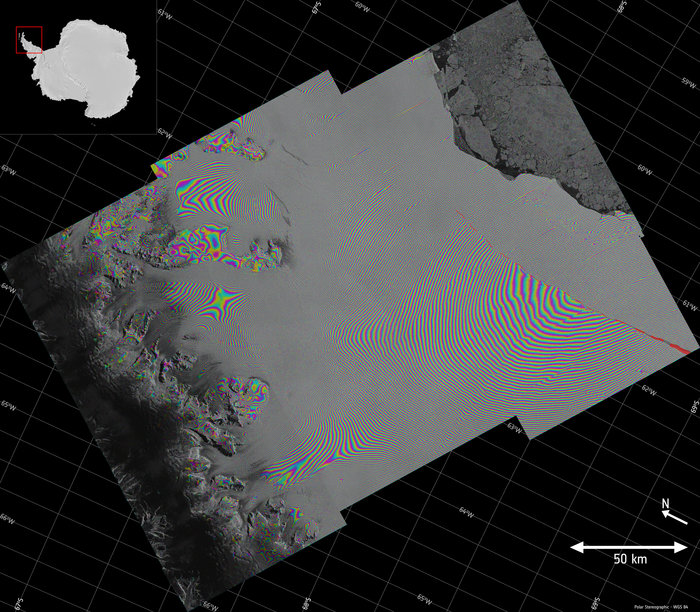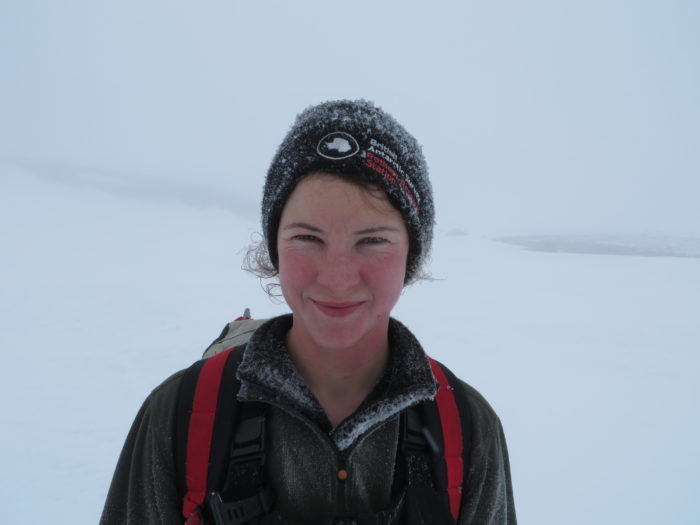Leeds scientists monitor new crack in Antarctic ice shelf

Scientists from Leeds are monitoring a new crack in the Larsen C ice shelf on the Antarctic Peninsula which has grown to 175km and is threatening to calve one of the largest recorded icebergs.
Two Sentinel-1 radar images from 7 and 14 April 2017 were combined to create an interferogram which dramatically illustrates the fringes of the growing crack.
Polar scientist Anna Hogg said: “We can measure the iceberg crack propagation much more accurately when using the precise surface deformation information from an interferogram like this, rather than the amplitude – or black and white – image alone where the crack may not always be visible.”

How long calving will will take is difficult to predict. The sensitivity of ice shelves to climate change has already been observed on the neighbouring Larsen-A and Larsen-B ice shelves, both of which collapsed in 1995 and 2002, respectively.
These ice shelves are important because they act as buttresses, holding back the ice that flows towards the sea.
The Copernicus Sentinel-1 two-satellite constellation delivers radar images every six days, even when Antarctica is shrouded in darkness for several months of the year, making them invaluable for tracking activity such as the new Larsen C crack.
The crack’s progress and the interferogram has been shown in a new video by Dr Anna Hogg, a European Space Agency Living Planet Fellow based at the School of Earth and Environment. Dr Hogg, who lived on the Pine Island glacier in West Antarctica for three months in 2013/2014, is also an independent research fellow in the Centre for Polar Observation and Modelling (CPOM) at the University of Leeds.
